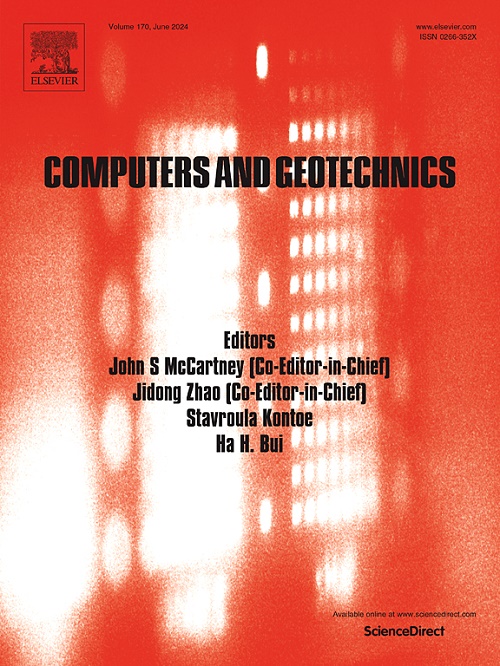Interaction between piles and layered fractional viscoelastic soils considering groundwater level
IF 5.3
1区 工程技术
Q1 COMPUTER SCIENCE, INTERDISCIPLINARY APPLICATIONS
引用次数: 0
Abstract
Based on the time-varying solution of layered fractional viscoelastic soils considering groundwater level, the interaction between soils and piles is studied by a finite element–boundary element coupling method. The single pile is regarded as a one-dimensional compressible bar to establish its stiffness matrix equation by the finite element method. Then, the fundamental solutions of layered fractional viscoelastic soils considering groundwater level are used as kernel functions in the boundary element method. According to the displacement continuity condition on the pile-soil interface, the interaction between single pile and soils is solved. Furthermore, by incorporating the pile-pile interaction as well as the balance and coordination conditions of the rigid cap, the solution of the single pile is extended to the pile group. Finally, the correctness of the presented method and program is validated, and several examples are designed to explore the effects of groundwater level, soil properties, pile parameters, and soil stratification on the pile-soil interaction. The analysis results show that, as the groundwater level declines, the displacement of the pile at the initial moment increases, and the reaction forces of center and side piles increase. Moreover, the increase of fractional order can accelerate the rate of pile displacement, reduce the axial force on the upper pile body, and decrease the reaction force at the top of the center and side piles.
求助全文
约1分钟内获得全文
求助全文
来源期刊

Computers and Geotechnics
地学-地球科学综合
CiteScore
9.10
自引率
15.10%
发文量
438
审稿时长
45 days
期刊介绍:
The use of computers is firmly established in geotechnical engineering and continues to grow rapidly in both engineering practice and academe. The development of advanced numerical techniques and constitutive modeling, in conjunction with rapid developments in computer hardware, enables problems to be tackled that were unthinkable even a few years ago. Computers and Geotechnics provides an up-to-date reference for engineers and researchers engaged in computer aided analysis and research in geotechnical engineering. The journal is intended for an expeditious dissemination of advanced computer applications across a broad range of geotechnical topics. Contributions on advances in numerical algorithms, computer implementation of new constitutive models and probabilistic methods are especially encouraged.
 求助内容:
求助内容: 应助结果提醒方式:
应助结果提醒方式:


